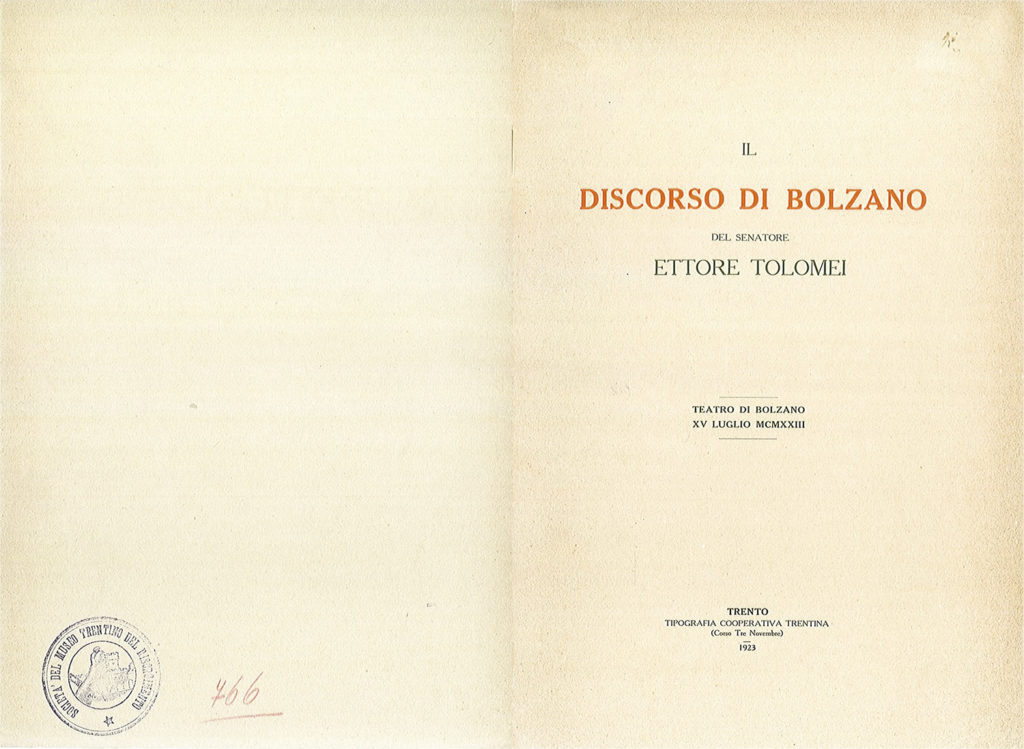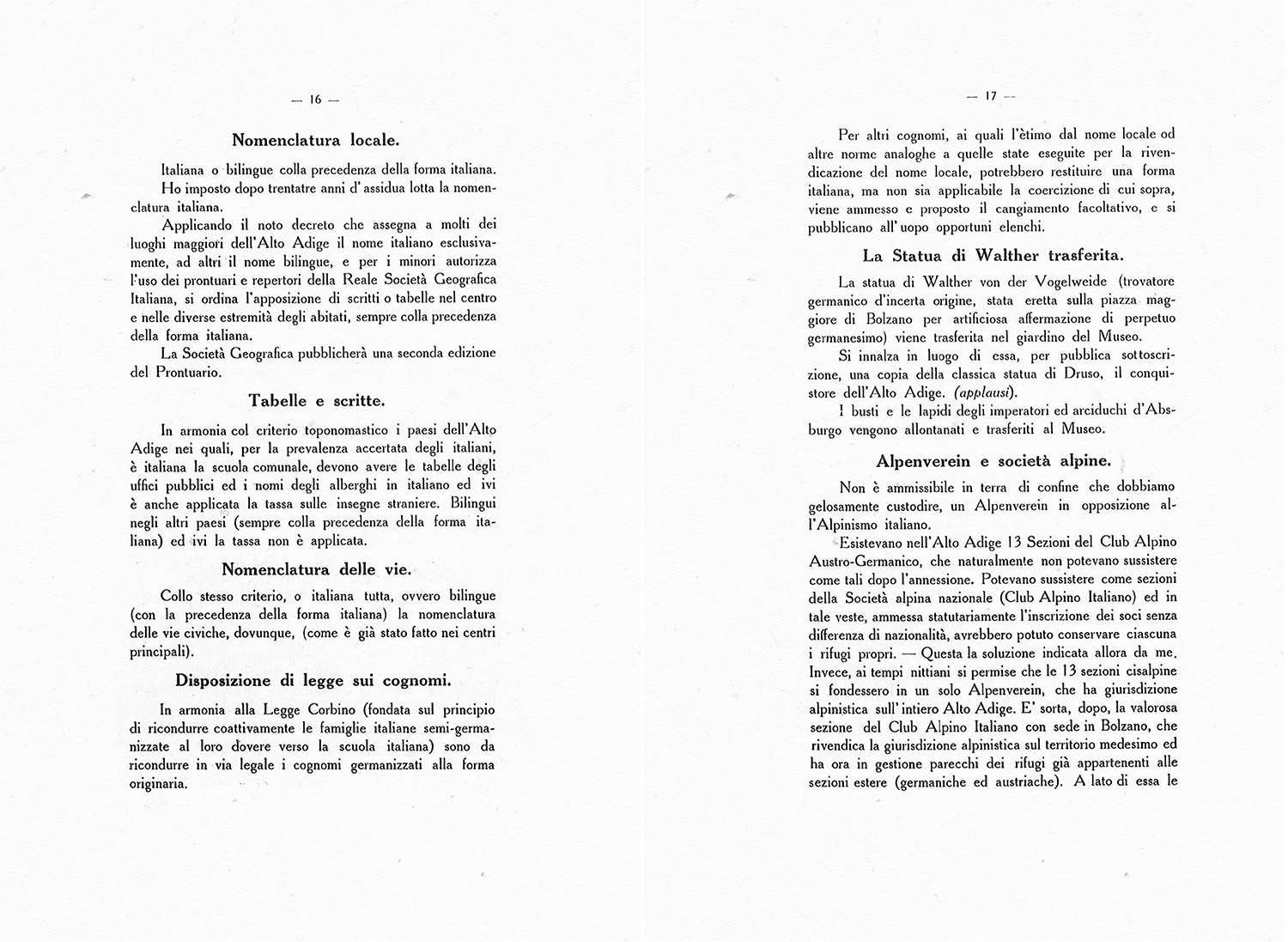
Beginning about 1890, the Italian irredentist and Fascist Ettore Tolomei attempted, on the basis of very unscientific methods, to demonstrate that South Tyrol was legally a part of Italy. His efforts resulted in a “rethinking” on the part of Italian nationalists, who revised their original demand for a border south of Salurn to claim a “holy border” at the Brenner Pass.
In 1915, after secret negotiations in London during which it obtained assurances from England, France, and Russia that it would be awarded additional territory – including South Tyrol – after the war, Italy left the “Triple Alliance” (with Germany and Austria). On May 23, 1915, Italy then declared war on the Austro-Hungarian Empire.
During the armistice negotiations at the end of World War I, Italy demanded – on the basis of these territorial demands – that Austro-Hungarian troops retreat to north of the Brenner Pass. Italian troops were then able to immediately seize South Tyrol without a battle.
On July 15, 1923, Ettore Tolomei proposed his “Measures” for the Italianization of South Tyrol:


Provvedimenti per l’Alto Adige
- Unification of the provinces of Alto Adige and Trentino to form a single province with Trento as the capital.
- Appointment of Italian Community Secretaries.
- Revision of the (citizenship) options and closure of the Brenner border crossing for all persons who did not receive Italian citizenship.
- Imposition of special restrictions on entry and residency for Germans and Austrians.
- Prevention of the immigration of Germans.
- Revision of the 1921 census.
- Introduction of Italian as the official state language.
- Dismissal of German civil servants and/or re-assignment to positions in the old provinces
- Dissolution of the “German Association.”
- Dissolution of all alpine associations not under the umbrella of the Italian Alpine Association; transfer of ownership of the alpine huts to the Italian Alpine Association.
- Prohibition of the name “South Tyrol” and “German South Tyrol.”
- Cessation of “Der Tiroler,” a publication appearing in Bozen.
- The Italianization of German place-names.
- The Italianization of public inscriptions.
- The Italianization of street and trail names.
- The Italianization of Germanized surnames.
- Removal of the Walther von der Vogelweide monument from the Waltherplatz in Bozen.
- Reinforcement of the Carabinieri troop and the exclusion of German crews.
- Favorable treatment of the purchase of property by and immigration of Italians.
- Non-interference by foreign entities in South Tyrolean affairs.
- Elimination of German banks; establishment of an Italian land credit bank.
- Establishment of border customs agencies in Sterzing and Toblach.
- Generous promotion of Italian language and culture.
- Establishment of Italian kindergartens and primary schools.
- Establishment of Italian secondary schools.
- Strict control of foreign certificates of completion issued by foreign institutes of higher learning.
- Expansion of the Istituto di Storia per l’Alto Adige.
- Alteration of the size of the bishopric of Brixen and strict control of the activity of the clergy.
- Use of the Italian language in legal proceedings and before the court.
- State control of the Chamber of Commerce of Bozen and of the agricultural associations (Corporazioni).
- Comprehensive programs for new railroad junctions in order to facilitate the Italianization of Alto Adige (the Mailand-Mals, Veltlin-Brenner, and Agordo-Brixen railroad projects).
- Strengthening of the number of troops in Alto Adige
Source: Alfons Gruber, Südtirol unter dem Faschismus (Schriftenreihe des Südtiroler Kulturinstitutes 1), Bozen 1974, 21f.













